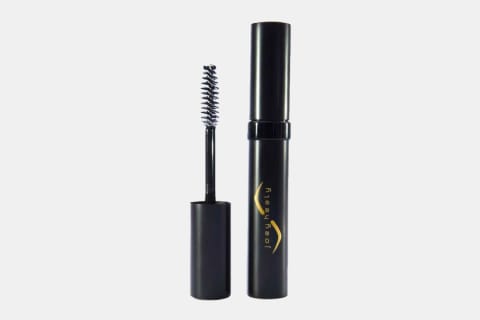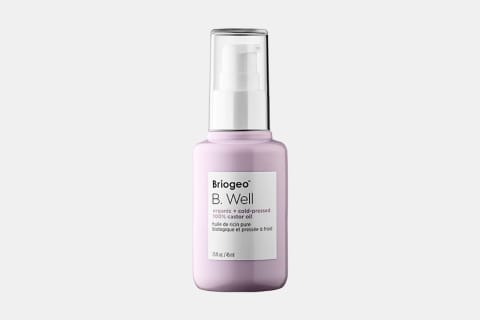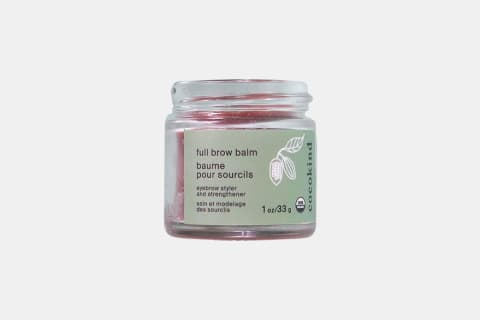Wanting your brows to grow back is a valid concern. (As many long for the full, lush brows that many seem to have on Instagram and the like.) However, we may not be able to give you the answer you are looking for—that’s not to say you are out of options. Allow us to explain. First up, if you want to see what your “full regrowth” is, it takes time: “Generally, four to six weeks is when you’ll experience what most brow specialists refer to as a ‘full regrowth’; however, there are people who tend to see growth in up to eight to 10 weeks. Then there are those who see very nominal growth beyond. I’ve had certain clients who we’ve been patient with letting their brows grow in, and over the course of a year, they saw little bits come in very slowly that were small,” brow expert Joey Healy tells us. “The majority of your regrowth will be seen in four to six weeks, sometimes eight.” So if you’ve given your strands a good several weeks to do their thing, and you are still seeing gaps, thinner areas, or the like, are they gone forever? Unfortunately, maybe. Repeatedly pulling out hair—via wax or tweezers—is hard on the follicle. Do this too much, and the follicle becomes damaged and dies. Once that happens, the hair will never be able to grow back. “Brows can thin over time as we age, but oftentimes brows thin even more as a result of over-plucking or over-tweezing,” board-certified dermatologist Whitney Bowe, M.D., has previously told mbg. “Plucking, tweezing, threading, and waxing all pull the hair from the root, and there’s only so much trauma each root can take. Repeating these insults to our hair root over time increases the likelihood that some hairs will never regrow, as too much damage has been done to the base of the root where the stem cells live.” So this means if you’ve been shaping your brows for months, years, or decades—there might not be much you can really do to turn back the clock. “Most people are surprised to learn that their brows have real limitations of regrowth, especially if you’ve been shaping your brows for a long period of time,” says Healy. “You might be surprised by how wimpy the new growth is even after waiting eight to 10 weeks, so, yes, there is value to seeing what their maximum capacity is, but letting them regrow does not mean they are going to be back to the natural brows of your youth, or they are not going to return to the natural brows you had before you starting shaping them.” Another issue is scar tissue, notes Healy: “Know that hair will not grow on a burn or a scar either. For example, if you had a brow piercing or trauma to the skin that created a scar, no amount of time is going to cover that because the hair follicle is compromised when the brow is scarred.” Essentially, you are not trying to regrow brows to what they were when you were younger; you are simply trying to regrow the brows to the best they can be right now. It’s an important distinction because if you are waiting for full, lush brows and you don’t see them come back in a few weeks, you might get disappointed or frustrated. Don’t be: Your brows are simply what they are, and then you work with what you’ve got. Here’s our guide to encouraging regrowth: Taking a biotin supplement has proved to help with some instances of hair loss and can keep the hair you do have healthy.* Thinning hair and hair loss are very common symptoms of biotin deficiency3 and can be supported with a supplement.* Additionally, biotin is believed to naturally promote healthy hair growth because it is involved in the production of keratin, the main component of hair.* In one small study, women with thinning hair reported significant regrowth when supplementing with biotin as compared to those given a placebo.* As for the science, here’s what Bowe had to say: “There’s no published data showing that castor oil can help, but I do have the occasional patient who swears by it.” And that’s basically the best answer you are going to get. There are just no studies, research papers, or published resources to suggest that castor oil is actually helping hair grow faster or spurring regrowth—and, yet, anecdotal evidence abounds. It does have significant other benefits for hair, even if it doesn’t directly cause regrowth. It is high in antioxidants (like vitamin E), which have been shown to fight free radicals in hair as well as minimizing inflammation at the scalp. Free radical damage has been linked to graying and aging of the hair2. Inflammation has been linked to flaking, dryness, redness, tenderness, and even alarmingly, hair loss.





